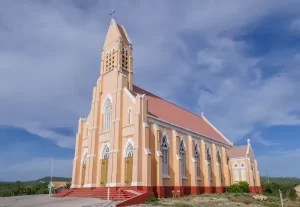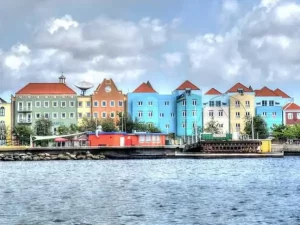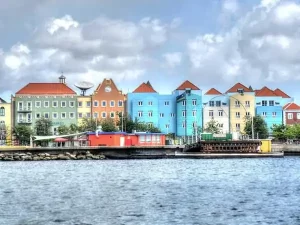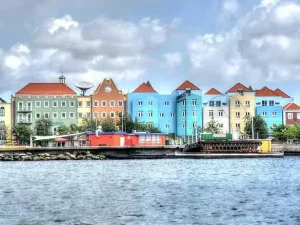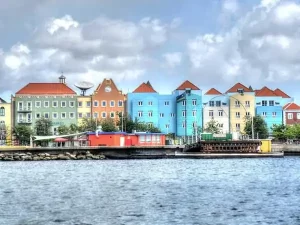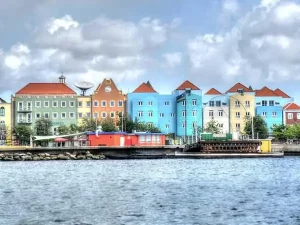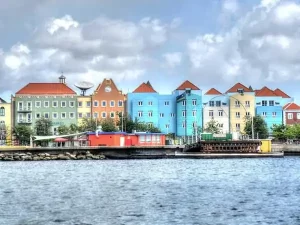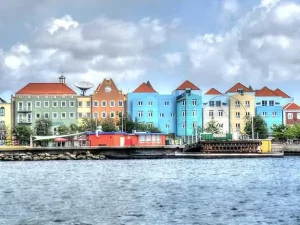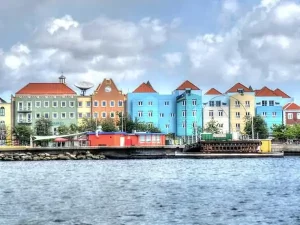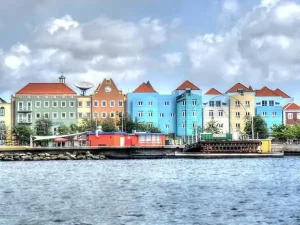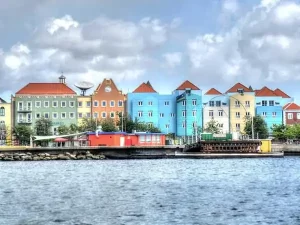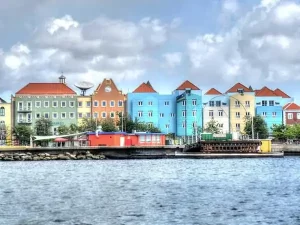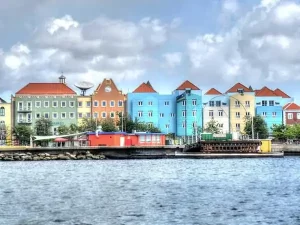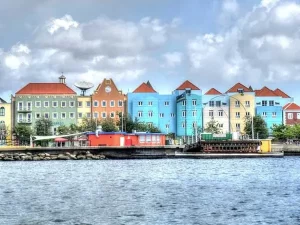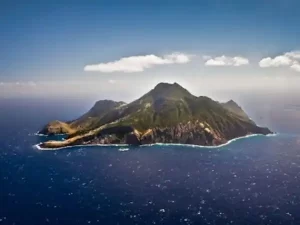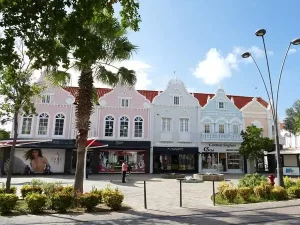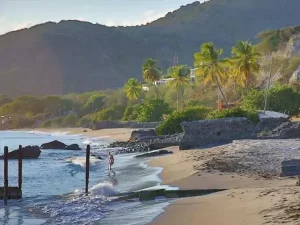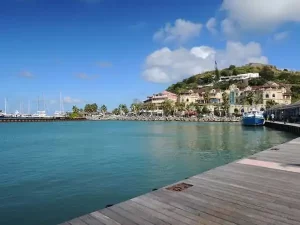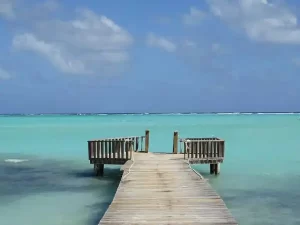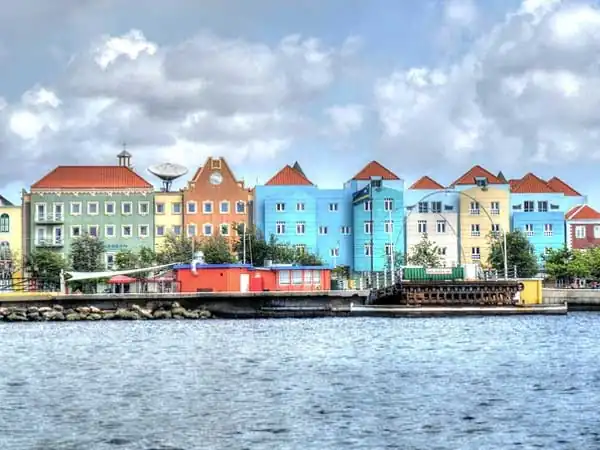
Curacao Island
Exploring the Charms of Curacao Island in the Dutch Caribbean: A Journey Through Time and Culture
Embark on a captivating journey to the heart of the Dutch Caribbean as we set sail to explore the enchanting island of Curacao.
This Dutch Caribbean gem, nestled in the azure embrace of the Caribbean Sea, unfolds a tale woven with history, cultural richness, economic resilience, and the vibrant spirit of its people.
- Dive into the azure embrace: Our journey begins on the sun-kissed shores of Curaçao, a Dutch Caribbean haven. What stories await beneath the surface of this captivating island?
- Centuries unfold: From Arawak settlements to modern ambitions. What threads connect the historical fabric of Curaçao to its present-day aspirations?
Where to stay in Curacao Island
With a range of accommodations to suit any budget, from luxury resorts to charming bed and breakfasts, there’s no better place to experience the best of both worlds.
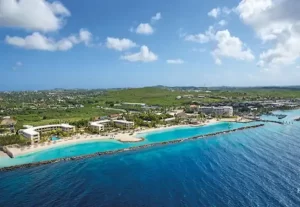 WHERE to STAY
WHERE to STAYAll Inclusive Resorts Curacao Island
One of the best ways to experience all that Curaçao has to offer is by staying at an all-inclusive resort. These resorts provide everything you need for a worry-free vacation, from delicious meals and refreshing drinks to exciting activities and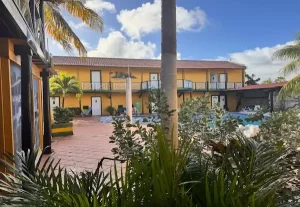 WHERE to STAY
WHERE to STAYHotel Rancho el Sobrino Westpunt Curacao
This charming aparthotel, located in the quiet western part of the island, offers a perfect blend of comfort, convenience, and local charm. You'll find comfortable and self-contained studios, each equipped with everything you need for a pleasant stay.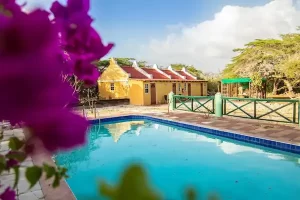 WHERE to STAY
WHERE to STAYLandhuis Daniel Hotel Curacao A Hidden Gem in the Dutch Caribbean
Landhuis Daniel Hotel Curacao is a Hidden Gem in the Dutch Caribbean Landhuis Daniel Hotel Curacao offering an outdoor pool and an organic restaurant, Plantation House Daniel is located only a 10-minute drive from Karakter Beach It offers guests spacious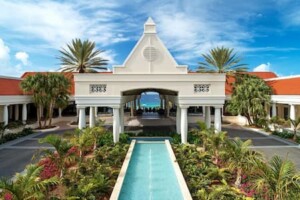 WHERE to STAY
WHERE to STAYCuraçao Marriott Beach Resort
Curaçao Marriott Beach Resort is located in Willemstad, 100 yards from Parasasa Beach, and features a restaurant, free private parking, an outdoor swimming pool, and a fitness center. A bar, a common lounge, and a garden are just a few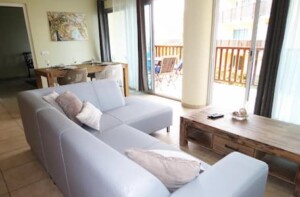 WHERE to STAY
WHERE to STAYPalapa Beach Resort Curacao
Palapa Beach Resort Curacao Located in Jan Thiel, 0 7 miles from Tugboat Beach, Palapa Beach Resort Curacao provides accommodation with an outdoor swimming pool, free private parking, a garden and a private beach area Featuring family rooms, this property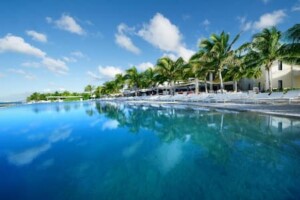 WHERE to STAY
WHERE to STAYPapagayo Beach Resort
Papagayo Beach Resort is a 3-minute stroll from Jan Thiel Beach and features a beach club, outdoor pool, and lovely grounds. Free Wi-Fi and a fully equipped kitchen are included in each tropical-style home. The opulent Papagayo villas include air-conditioned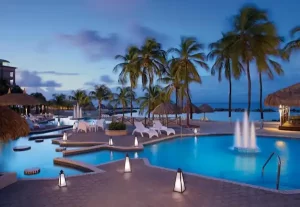 WHERE to STAY
WHERE to STAYSunscape Curacao Resort Spa and Casino
Offers an outdoor pool, a sauna and a free town centre shuttle service This all inclusive features massage services and free parking on site The rooms present colourful beddings, views of the ocean or the gardens, and cab- WHERE to STAY
The Royal Sea Aquarium Resort
The Royal Sea Aquarium Resort Located on a private island next to Curaçao Sea Aquarium, the Royal Sea Aquarium Resort features 2 swimming pools, a hot tub and a private beach You can enjoy meals in the resorts beachfront restaurantEach - WHERE to STAY
Lagoon Ocean Resort
Lagoon Ocean Resort Lagoon Ocean Resort offers apartments with a furnished terrace, and there is also a shared swimming pool and free Wi-Fi throughout It is located directly on Lagoon Beach, where guests can view sea turtles and enjoy incredible - WHERE to STAY
Livingstone Jan Thiel Resort
Livingstone Jan Thiel Resort Offering spacious apartments and villas with views of the ocean and surrounding tropical gardens, this hotel in Curacao offers easy access to activities as well as relaxing facilities Livingstone Jan Thiel Resort features a large outdoor
Food and Drink
 WHERE to STAY
WHERE to STAYLandhuis Daniel Hotel Curacao A Hidden Gem in the Dutch Caribbean
Landhuis Daniel Hotel Curacao is a Hidden Gem in the Dutch Caribbean Landhuis Daniel Hotel Curacao offering an outdoor pool and an organic restaurant, Plantation House Daniel is located only a 10-minute drive from Karakter Beach It offers guests spacious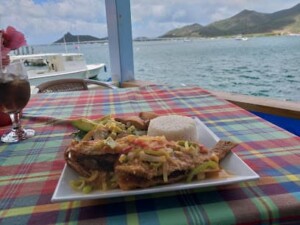 Restaurant
RestaurantZambezi Restaurant
Other delicacies available at Zambezi include our wonderful Pumpkin Soup, Couscous Salad, and Cape Malay Lamb Curry. We serve French fries with snacks or pumpkin pancakes with syrup to the younger customers. Our Wine Menu features a selection of the- Restaurant
Zanzibar Beach and Restaurant
Kaya Damasco - G - Restaurant
Zest Mediterranean
Kaya Damasco - E - Restaurant
Zhong Hua Lou
116a Winston Churchillweg 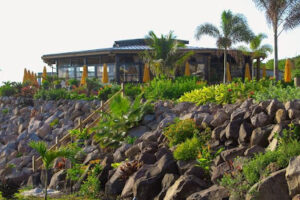 Restaurant
RestaurantZhong Wa Sin Restaurant
365 Franklin D. Rooseveltweg +599 318 3348- Restaurant
Tomatoes Pizza Curacao
Piscaderaweg +1 721-544-4573 - Restaurant
Tony Roma’s
Schottegatweg Oost # 171 H 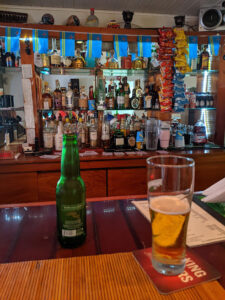 Bar
BarWet and Wild Beach Club
+297 583 9705- Restaurant
Texas Alaparia
Perseusweg +297 592 0250
Activities and Attractions in Curacao Island
The island offers a diverse range of activities and places to visit, especially when the temperature is consistently 30 degrees Celsius throughout the year, There are a variety of outdoor activities available in Curacao in addition to the beaches, diving opportunities, and numerous museums.
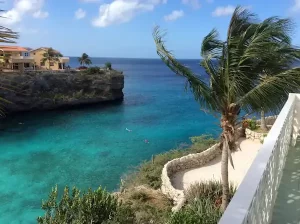 Beach
BeachExplore Playa Piskadó in Sabana Westpunt A Hidden Gem for Turtles and Tranquility
Discovering Playa Piskadó, More Than Just a Beach Situated in Sabana Westpunt, Curacao, Playa Piskadó may not fit the conventional definition of a beach, but it offers an extraordinary experience with abundant turtles and captivating underwater scenes. A Tiny Fishermen's- Beach
Cas Abao
- Beach
Habitat Curaçao
- Beach
Punda Beach Curazao “Playa De Los Venezolanos”
- Beach
Jan Thiel Beach
- Beach
Santa Barbara Beach
- Beach
Seaquarium Beach
- Beach
Kleine Knip
- Beach
Parasasa Beach
- Beach
Baya Beach
Popular places and locations in Curacao Island
Willemstad, Curacao’s capital, is a tropical replica of Amsterdam. Instead of monochromatic residences along Amsterdam’s canals, Curacao’s waterfront is lined with brilliantly colored structures in the same colonial style.
Find the perfect location around the place in some of the most popular towns and villages.
Latest Curacao Island Guides & Articles

All Inclusive Resorts Curacao Island
One of the best ways to experience all that Curaçao has to offer is by staying at an all-inclusive resort. These resorts provide everything you need for a worry-free vacation, from delicious meals and refreshing drinks to exciting activities and
Hotel Rancho el Sobrino Westpunt Curacao
This charming aparthotel, located in the quiet western part of the island, offers a perfect blend of comfort, convenience, and local charm. You'll find comfortable and self-contained studios, each equipped with everything you need for a pleasant stay.
Explore Playa Piskadó in Sabana Westpunt A Hidden Gem for Turtles and Tranquility
Discovering Playa Piskadó, More Than Just a Beach Situated in Sabana Westpunt, Curacao, Playa Piskadó may not fit the conventional definition of a beach, but it offers an extraordinary experience with abundant turtles and captivating underwater scenes. A Tiny Fishermen's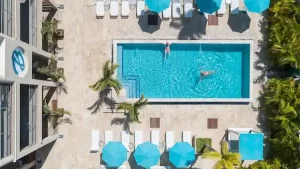
10 Hidden Gem Accommodations in Curacao That You Won’t Want to Miss
A Dutch Caribbean island known for its picturesque beaches, colorful buildings, and lively culture. But beyond its popular tourist spots, the island is also home to many hidden gems when it comes to accommodations. Whether you're looking for a secluded
Landhuis Daniel Hotel Curacao A Hidden Gem in the Dutch Caribbean
Landhuis Daniel Hotel Curacao is a Hidden Gem in the Dutch Caribbean Landhuis Daniel Hotel Curacao offering an outdoor pool and an organic restaurant, Plantation House Daniel is located only a 10-minute drive from Karakter Beach It offers guests spaciousCuracao Island: A Dutch Caribbean Gem
Curacao Island is halfway between Bonaire and Venezuela, and it’s directly above Venezuela. The ABC islands, which are all Dutch territory, are made up of the three islands, The Netherlands Antilles’ largest and most populated island.
One of the most iconic features of Curacao Island is its colorful capital city, Willemstad.
With its pastel-colored buildings and charming waterfront, Willemstad is a must-see for any traveler to the island.
Wander through the streets of the city’s historic district, visit the famous Queen Emma Bridge, and explore the local markets and shops to get a taste of the island’s unique culture.
Historical Background
Picture this: Curaçao island, initially settled by the Arawak people, witnessed the European gaze in 1499.
Spanish and Dutch influences shaped it into a bustling trade hub for the Dutch West India Company. The island’s strategic Sint Anna Bay became a lifeline, and between 1660 and 1700, the Dutch flourished, mastering the art of trade amidst invasions and wars.
- Arawak roots and European influences converge on Curaçao island. But, let’s delve deeper: “Where is Curaçao island located exactly?”
- Sint Anna Bay: The beating heart of Dutch trade mastery. Can you imagine the hustle and bustle of this historical trade hub?
- The island’s resilience through invasions and wars. How did Curaçao island stand strong during these challenging times?
Demographics and Governance
Fast forward to 2023, and Curaçao island is home to around 147,300 souls. Meet Prime Minister Gilmar Pisas steering the ship, while Dutch Monarch King Willem-Alexander, represented by Governor Lucille George-Wout, oversees from afar.
With Dutch, Papiamentu, and English as its official languages, the island of Curaçao buzzes with a linguistic symphony.
Have you ever wondered about the unique demographics of this Dutch Caribbean gem?
- A snapshot of Curaçao island’s vibrant population: 147,300 strong. But, where is Curaçao island exactly teeming with life?
- Captain Gilmar Pisas at the helm of governance. Who leads the ship in the political waters of Curaçao island?
- Dutch Monarch King Willem-Alexander’s oversight through Governor Lucille George-Wout. How does the Dutch monarchy influence life on the island of Curaçao?
Political History
In 1845, Curaçao island joined five other Dutch dependencies, eventually forming the Netherlands Antilles in 1954. Winds of change blew in 2010 when, like Aruba, it embraced independence within the Kingdom of the Netherlands.
A unique governance structure, blending autonomy and external responsibilities, shapes the political landscape of this Dutch Caribbean island. Are you curious about the political journey of Curaçao island within the Kingdom of the Netherlands?
- 1845: Curaçao island joins Dutch dependencies; 1954: Birth of the Netherlands Antilles. But, how did it evolve into the independent Dutch Caribbean island it is today?
- 2010’s pivotal moment: Independence within the Kingdom of the Netherlands. What led Curaçao island to take this significant step?
- Curaçao island’s political landscape: Autonomy intertwined with external responsibilities. How does this unique governance model work?
Economic Landscape
Curaçao island’s economic journey is as diverse as its landscape. From a sugarcane-plantation era to becoming a petroleum refining giant, the island has weathered challenges.
Today, its large tankers and strategic trade routes position it as a key player in the global economy.
Despite diversification attempts, tourism and banking remain vital. Are you ready to explore the economic facets of this Dutch Caribbean island?
- Sugarcane to petroleum: Curaçao island’s economic evolution. How did this Caribbean gem transform into a petroleum giant?
- Global economic player: Tankers, trade routes, and strategic positioning. What makes Curaçao island a key player in the global economic arena?
- Diversification struggles: Tourism and banking as economic pillars. How has Curaçao island balanced tradition with economic growth?
Recent Developments
Recent headlines hint at Curaçao island spreading its wings. Seeking closer trade ties with Suriname and the appointment of Dick Advocaat as the national team coach showcase the island’s ambitions beyond its shores.
Have you been keeping up with the latest adventures of Curaçao island?
- Ambitious horizons: Curaçao island’s closer ties with Suriname. How are these ties shaping the future of the island?
- Sporting spirit: Dick Advocaat takes the helm of Curaçao island’s national team. How does sports contribute to the identity of this Dutch Caribbean gem?
Language and Culture
Languages on Curaçao island tell tales of its past. Dutch, a linguistic legacy, stands alongside Papiamentu, a creole born from Portuguese, Spanish, and African influences.
Papiamentu, with its unique tonal features, echoes through schools, media, and political spheres. How do the languages of Curaçao island weave a cultural tapestry?
- Linguistic mosaic: Dutch and Papiamentu weaving tales. How have these languages shaped the cultural identity of Curaçao island?
- Papiamentu’s roots: Portuguese, Spanish, and African influences. Can you trace the fascinating journey of Papiamentu on this Dutch Caribbean island?
- Tonal uniqueness: Papiamentu in schools, media, and politics. How does the tonal richness of Papiamentu add vibrancy to life on Curaçao island?
From the strategic trade hub of Sint Anna Bay to the ambitious pursuit of closer ties with Suriname, Curaçao stands as a testament to resilience and adaptability.
Its economic evolution, linguistic mosaic, and recent forays into international relations paint a portrait of a Dutch Caribbean paradise that continues to captivate the world.
- Curaçao island: A proud economic force and cultural mosaic. Ready to explore the depths of this Caribbean gem?
- Sun-kissed shores await: Uncover Curaçao island’s wonders. Where will your next adventure on this Dutch Caribbean paradise take you?
- A must-visit on every traveler’s map: Happy exploring! 🌴🌊✨ Where will Curaçao island take you next?
Explore the Dutch Caribbean Islands
There are more Islands to enjoy and Explore around this destination that are waiting for you to visit.
